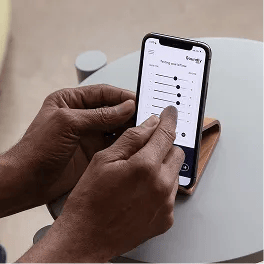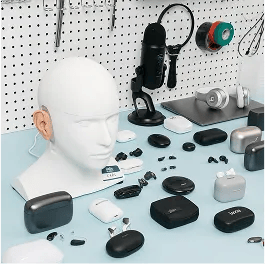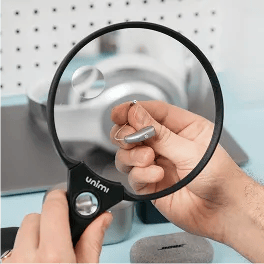In today's world, most of us use phones to communicate with friends and family. Phones are essential, not only for social connection but also convenient for security and safety.
As an audiologist, I've worked with many patients with hearing loss. Unfortunately, phone calls can cause communication barriers affecting quality of life and morale.
Why are phone calls difficult? The frequencies transmitted in a phone call make it harder to hear and the lack of visual cues doesn't help a person with hearing loss.
Fortunately, there are ways to improve the communication experience with today's technology. With a cellphone or landline, captioning can help better understand phone conversations and support communication.
Let's take a closer look at the best caption phones available (some for free).
A wide range of caption phones are available in the market, and choosing one can sometimes feel overwhelming. Let's look at some of the best options.
- There are several no-cost caption phone services available
- With technological advancements, using caption apps on your cell phone can also provide benefits
- Consider your hearing needs and choose a phone with loud, clear sound
- 50+ hearing aid brands reviewed and rated by our team of hearing aid wearers and audiologists
- 200+ hours each month spent researching brands and care options
- 2,000,000 people shopped on Soundly in 2024
- 100% independently owned and operated
Read more about our company, services and process here.
Featured in this article
CaptionCall by Sorenson
A home phone that provides big, clear captions to help with taking phone calls in your home. CaptionCall also has a CaptionCall Mobile service for those wanting to use this service on the go.
CaptionCall by Sorenson
CaptionCall is a service crafted to support those navigating hearing loss and struggling with phone calls. It's part of a larger suite of solutions developed by Sorenson, a company that specializes in communication products and services designed for the deaf and hard-of-hearing community. With a focus on innovation, CaptionCall uses advanced technology, to provide real-time captioning for telephone conversations. This is achieved through the use of transcription technology, speech recognition software, and a network of communications assistants who transcribe spoken words into written captions. The hardware includes a telephone with a large screen to display these captions, facilitating a smoother communication experience for users with hearing difficulties. While the primary function is to assist with telephone communication, the service also aims to enhance the user's overall quality of life by making connections with others more accessible and stress-free.
Advanced Technology & Human Assistance: CaptionCall is the market leader and combines speech recognition software with human transcription, enhancing caption accuracy.
Large Screen Hardware: Includes a dedicated phone with a large screen for easy reading, improving user experience.
All-Inclusive Setup Service: CaptionCall comes with a free hassle free setup service in your home. A member of the CaptionCall team will connect your device regardless of your internet or location. If needed, they will come back and retrieve or swap the phone when new generations come out.
- Stores your captioned conversation for later reference.
- Captioning available in English or Spanish
- Large buttons, high-resolution touchscreen for easy use
- Number memory to store your important phone numbers
- Built in customer service help number on the phone for questions
- CaptionCall's mobile app has an impressive 4.8 stars
- May not be the right option for a non-tech savvy individual due to advanced feature options.
- Some find the handset on the landline phone uncomfortable.
- Some users report caption errors. However, there is an option to change the captioner if desired.The feature to store pictures with phone numbers was discontinued.
CapTel 840
Hamilton CapTel is a service designed to assist individuals with hearing loss in effectively communicating over the phone. It works by transcribing spoken dialogue in real-time, enabling users to read what is being said during the call. This service can be particularly beneficial for those who may not be able to rely solely on hearing to understand conversations, thus providing a more inclusive telecommunication solution.Hamilton CapTel acknowledges that access to a consistent internet connection can be variable for users, which is why it offers flexible options to cater to different needs. For individuals with internet access, Hamilton CapTel's service can be used through various internet-enabled devices, including smartphones, tablets, and computers, providing versatility and convenience. On the other hand, for users without internet, specialized CapTel phones are available that work with traditional telephone service, ensuring that all users, regardless of their internet accessibility, can experience the advantages of clear, readable conversations.
No Internet Required: Perfect for users who don’t have internet access, providing captioning through a traditional telephone line.
Simple Design: Features large, easy-to-use buttons, ideal for those who prefer a more straightforward, tactile experience.
Reliable Landline Option: A great choice for users seeking a no-frills, reliable captioned phone experience without the need for connectivity.
- Good option for those who don't like touchscreens or don't have stable internet.
- Outgoing calls are automatically connected to the captioning service.
- The system offers a wide range of volume adjustments, up to 40 decibels, catering to various levels of hearing loss and allowing for a personalized listening experience.
- Built-in answering machine
- Adjustable font and a phone book that stores up to 95 phone numbers.
- Not available in all states.Incoming callers must first call the number for the captioning service.
- The phone may have a limited range of features compared to other options on the market.
Hamilton CapTel 2400i
The history of CapTel, or Captioned Telephone, dates back to the early 2000s when it was developed to blend the convenience of telephonic communication with the clarity of text. This innovation came as part of the broader movement for assistive communication technologies spurred by the Americans with Disabilities Act (ADA). The ADA propelled efforts to ensure equal communication access for those with hearing loss.
CapTel services utilize voice recognition technology and skilled captioning agents to provide real-time transcription of phone conversations, which appears on the CapTel device's screen, allowing users to read what is said almost simultaneously. The company offers a range of caption-enabled phones, aiming to make communication more accessible and less stressful for those with impaired hearing. Initially available as a landline service, CapTel has evolved, incorporating mobile and app-based solutions to meet the needs of increasingly mobile users. Hamilton CapTel has been at the forefront of these advancements, committed to improving the lives of individuals with hearing loss through constant innovation and dedicated service.
Touchscreen Convenience: The large color touchscreen simplifies navigation and customization for users who prefer more modern, visual interfaces.
Requires Internet: Ideal for users with internet access, offering enhanced features and mobile app integration for added flexibility.
Customizable Features: Users can adjust font size and colors to suit their needs, offering more personalized communication.
- The phone features a large, easy-to-read touchscreen, making navigation and reading captions straightforward for all users, including seniors and those with limited dexterity.
- For those who prefer internet connectivity, users can easily pair compatible devices and access internet services, enhancing the overall experience.
- Caller ID and an answering machine ensure users stay connected even when they're not available.
- The system offers a wide range of volume adjustments, up to 40 decibels, catering to various levels of hearing loss and allowing for a personalized listening experience.
- Poor internet connectivity may cause captioning delays.Some users find the touchscreen not always responsive.
- May be challenging for users who are unfamiliar with touchscreens.
- The volume setting readjusts to the default volume after each use. However, this can be adjusted in the advanced settings menu.
- The size of this phone may not be right for small or cramped spaces due to its size.
ClearCaptions 78T
ClearCaptions is a service that provides real-time phone captioning for individuals who are hard-of-hearing. With a goal to improve communication, ClearCaptions enables users to read live captions of their phone conversations, making sure they don't miss a word. Whether it’s a call with a loved one or an important business discussion, ClearCaptions ensures that users can follow along with ease and confidence.Founded on the principle of inclusivity, ClearCaptions emerged in 2011 with a mission to bridge the communication gap for the hard-of-hearing community. Recognizing the challenges faced by millions in following phone conversations, the company quickly adapted innovative voice-recognition technology to offer real-time captioning services. Initially servicing a modest base of users, ClearCaptions has since expanded, driven by a commitment to offer clarity and connection in every call. As they continued to evolve, partnerships with organizations advocating for individuals with hearing impairments helped establish ClearCaptions as a leader in accessible communication solutions.
Voice-Recognition Innovation: Specializes in voice-recognition technology for real-time captioning with a focus on clarity and ease.
Advocacy Partnerships: Strong ties to advocacy organizations for hearing-impaired individuals, boosting trust and community support.
Inclusive Growth: ClearCaptions has grown rapidly while maintaining a focus on inclusivity and accessibility.
- Captions are available in English and Spanish.
- Large, high-resolution touchscreen with adjustable font size and screen brightness for optimal visibility.
- Wifi and Bluetooth connectivity support
- Mobile app is an option for iPhone users.
- Poor internet connectivity may cause captioning delays.
- Font color cannot be adjusted.
- May be challenging for users who are unfamiliar with touchscreens.
- ClearCaptions offers only one phone model.
- Mobile app is not available for Android users.
Are caption phones really no-cost?
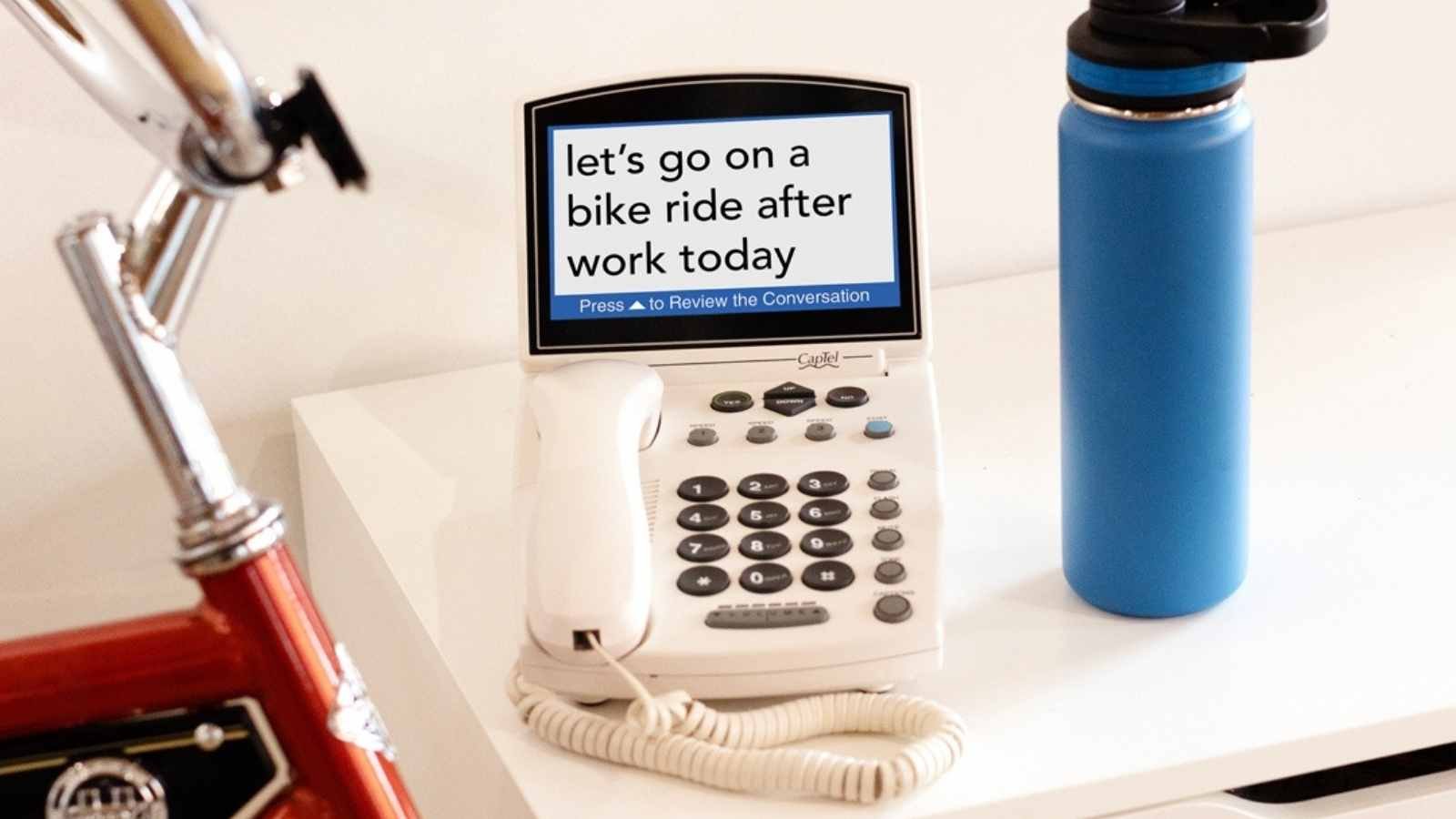
Yes, many caption phone companies offer the service for free to those with hearing loss, thanks to the ADA guidelines for hearing loss.
This is because the Federal Communications Commission (FCC) created the Telecommunications Relay Service (TRS) Fund, which reimburses companies that provide relay services and landline phones.
That being said, eligibility does not depend on income or medical needs. Some companies that offer free caption phones include CaptionCall, ClearCaptions, and Hamilton CapTel.
However, it's important to note that this service differs from IP Relay Service, used to help with captioning Smartphone calls.
How can I get a no-cost caption phone?
CaptionCall is available to individuals with hearing loss and doesn't require a healthcare professional to enroll. To start the process with CaptionCall, fill out this online form to get started.
Follow these steps to get a no-cost caption phone from CaptionCall:
- Fill out a form here
- Confirm that you have hearing loss and need captions to successfully talk on the phone (no doctor's note needed)
- An installer will call you to schedule your installation day
- An installer will come to your home and set up your device
The process of a CapTel phone involves a few more steps. First, you'll need to reach out to your hearing care professional to obtain confirmation of your hearing loss.
Follow these steps to get a no-cost caption phone from ClearCaptions.
- Fill out a form here
- A ClearCaptions professional will get in touch to qualify you and set up your installation
Follow these steps to get a no-cost caption phone from Captel:
- Fill out a third-party certification form. Find it here.
- Have the form certified by a hearing care professional, such as your audiologist. You can send it to them by email, fax, or mail to sign and date it.
- Submit the form to CapTel.
FYI: Are you a veteran? There is a self-certify option available to veterans right here at this link.
What to consider when choosing?
Ease of Use
When choosing a caption phone, several factors need to be considered.
What to keep in mind:
- Overall user experience
- Visibility (e.g., font size and large buttons)
- Screen brightness
- Easy-to-read menu buttons
Features
Next, ensure that the phone features, such as adjustable volume controls, speakerphone, and noise reduction features, meet your hearing needs.
Key features to look for:
- Models with a large, backlit displays
- Battery life
- Compatibility with hearing aids
- Customer support
Service and Support
It's important to know what types of resources you have for service and support if you encounter problems or have questions. For instance, most companies offer live support features like chat, phone, or email.
Cost
Finally, consider the cost when selecting a caption phone and there are many free options available through federally funded programs.
Are there downsides to a caption phone?
One downside to a caption phone can be speed. Why is speed a factor? Captioning services take time to process speech and transcribe it.
Additionally, sometimes inaccuracies in the captioning can occur but captioning is still a great support tool to help anyone stay in the loop in a conversation.
What are the best caption apps or features for cell phones?
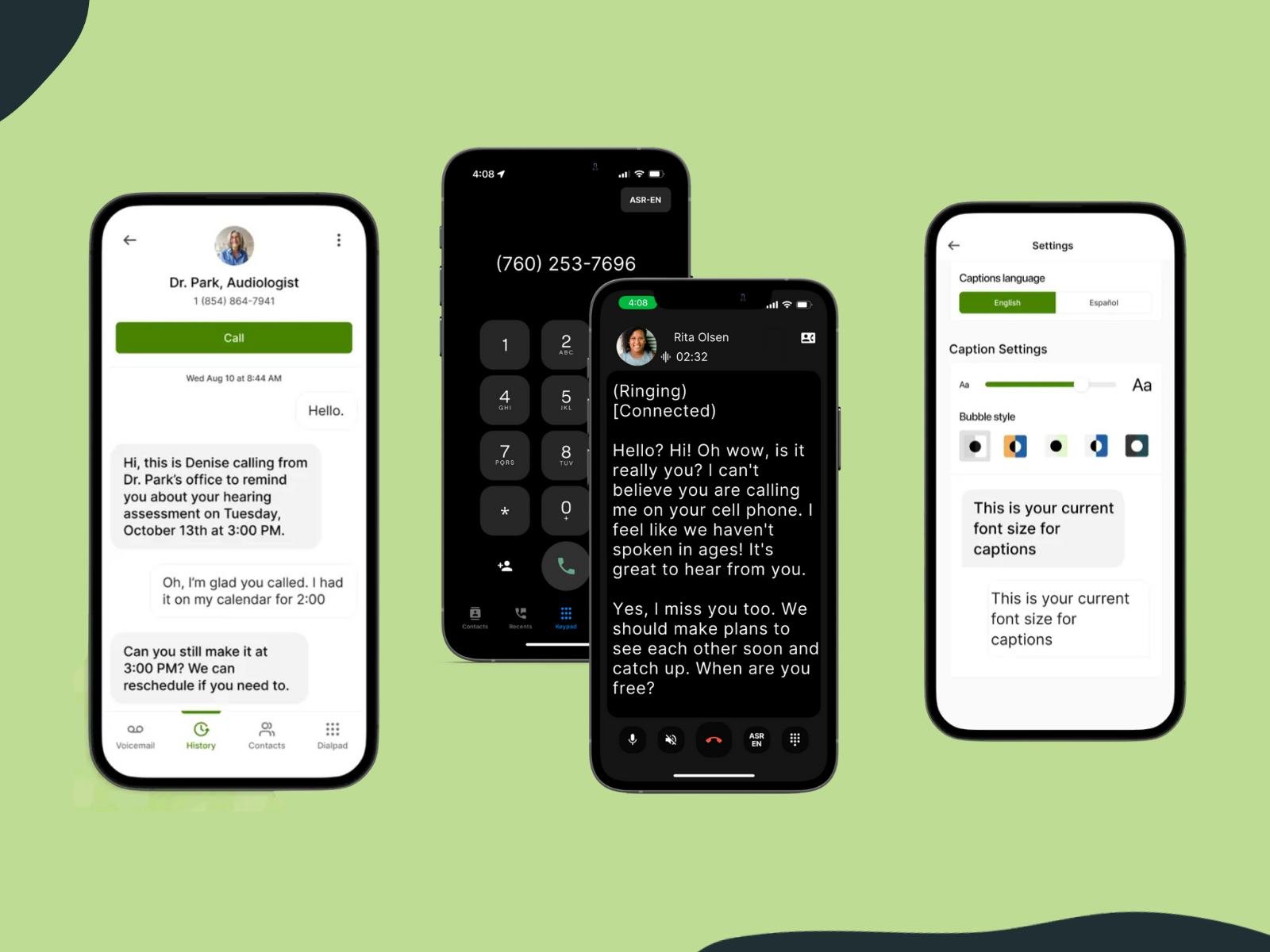
Several apps can assist those with a captioning service for those who prefer to use their cell phones. Let's look at two great options.
CaptionCall Mobile
CaptionCall offers a no-cost mobile captioning app for those with hearing loss. Available in both English and Spanish, the app has adjustable font size and allows you to follow conversations with captions, similar to a text message thread.
CaptionMate
Conveniently, this app will transcribe cell phone calls, landline calls, or from a tablet or computer. Even better: This app is free to use and works with over 100 languages.
InnoCaption
Use this free app—make sure to register and self-certify your hearing loss—for live-transcribed captions for fast, accurate captioning of cell phone calls.
How does the app work? Live stenographers provide captions to help you easily understand your phone calls for both Apple and Android devices.
Final Thoughts
Caption phones can make a positive impact on those who experience hearing loss. These devices are game-changers for the hearing-impaired community, allowing them to communicate more efficiently.
Frequently asked questions
There several options for connecting CaptionCall: high-speed internet, landline phone connection, or Smartphone mobile service.
Call captioning is federally funded and does not require an individual to have Medicare coverage.
CaptionCall’s parent company is Sorenson. In 2010 they launched their phone call captioning service.
CaptionCall is available for individuals with hearing loss and difficulty with phone communication. Additionally, a home landline connection, internet connection, or mobile Smartphone service is required to access CaptionCall technology.
For those who qualify for a CapTel phone, there are no monthly fees or service agreements.
CaptionCall has its headquarters located in Salt Lake City, Utah.
CapTel has options for phones with internet connection and without. For example, CapTel’s 840i phone does not require internet.



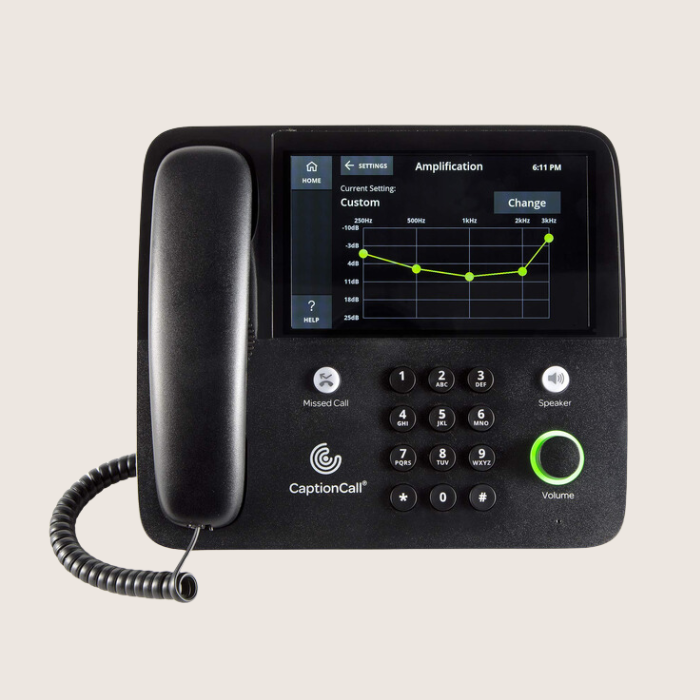
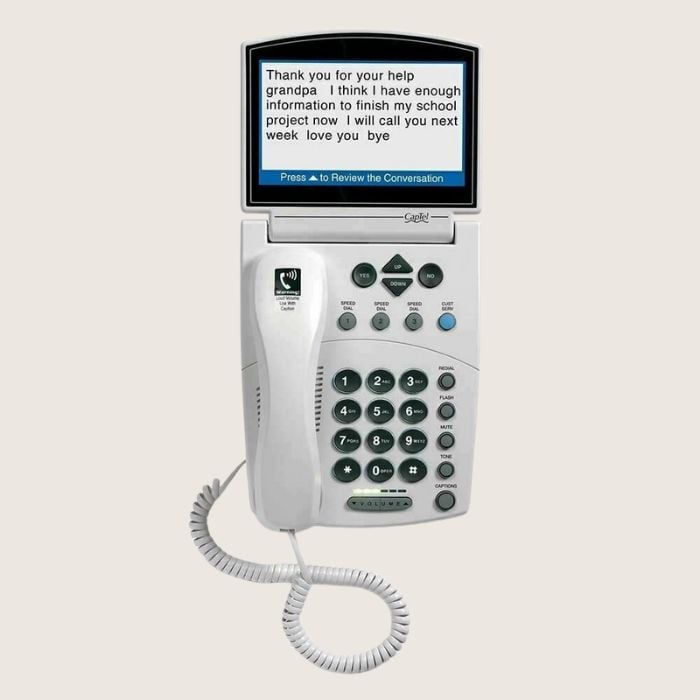
.png)
.jpg)
